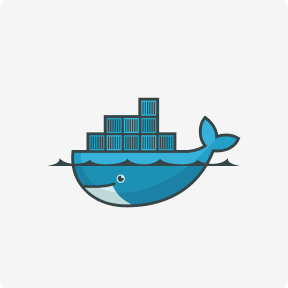However, with advancements in technology, we’re seeing BPO companies equipped and skilled at handling more challenging business processes. So, if you’re in the industry, better start investing in the right tools for remote work and consider flexible work arrangements to attract top talent. After all, the technology can reduce costs, provide control, and promote efficiency. We expect AI to significantly impact outsourced call centers which require accurate and speedy transactions. While the industry is embracing disruptive technologies like Artificial Intelligence, RPA, cloud enablement, outsourcing providers are also using the same to enable their partners to digitally transform. New contracts are revolving around cybersecurity and the company’s preparedness to continue delivering projects regardless of another lockdown in the future.
This company could then outsource production, or large parts of their production, to other companies around the world. People have been doing it for a number of decades, but it has become easier than ever with access to new technology. Using the internet, it is possible to outsource even relatively small tasks without the need for big contracts or committing to work with a company for the long term. These top outsourcing trends in 2021 hint of, hopefully, a continuous positive uptrend for the rest of the year, carrying on from an equally optimistic market outlook from 2020. Amid the relentless shifts in culture and media, it is vital to break through the clutter to deliver compelling stories that drive engagement within and outside of the industry. The team is the voice of our brand, delivering a full spectrum of integrated content solutions, whether it be editorial, long-form, snackable, or video.
Trend 2: Greater Adoption of Artificial Intelligence and Process Automation
This will allow businesses to focus on more important tasks, such as product development, customer service, and marketing. Outsourcing offers numerous benefits such as cost savings, increased efficiency, access to specialized skills and talent, and improved productivity. According to a recent study by Grand View Research, global outsourcing is predicted to reach USD 525.5 Billion by 2023 and expand at a CAGR from 2023 to 2030. Similarly, according to Outsource Accelerator’s CEO, Derek Gallimore, the outsourcing industry in the Philippines is expected to experience a significant surge, generating 40 million jobs and $600 billion in revenue. Gallimore also stated that the sector is countercyclical, indicating that the cost-cutting measures and potential recession in the West would create more opportunities for outsourcing in the Philippines and other locations. Many companies quickly embraced a hybrid workplace strategy that leveraged the outsourced service provider to increase productivity and reduce costs.
- That, in turn, places the onus on service providers to expand their skills and offerings.
- The future of Outsourcing is a straightforward solution that eases financial burdens on startups and SMEs.
- For example, missed deadlines or poorly executed work due to a lack of supervision.
- (See Exhibit 3.) The areas for future discussion will likely be changes in the contractual terms and conditions, pricing structure, delivery model, and scope of providers’ services.
- The positive impact on the company’s budget represents one of many benefits of outsourcing.
- SuperStaff is a forward-thinking company that has been instrumental in ensuring the growth of numerous clients across the U.S. and other parts of the world.
- Customers become much more accustomed to things like chatbots and systems of automated online interactions than ever before.
When outsourcing, businesses are able to remain focused on the critical internal functions of the organization. In fact, outsourcing non-core business processes is often more cost-effective. This reduces stress, saves money, and allows companies to allocate their time toward their strengths. The majority of companies choose outsourcing because it’s much cheaper than building an in-house team. This is dictated by the reduction in expenses for recruitment services, office space, equipment, insurance, vacations, and corporate events.
Outsourcing Marketing Management
Lack of funds to invest in additional resources is a big reason hindering business growth for many organizations. Global outsourcing and virtual outsourcing solutions allow companies to find partners from any part of the world to execute some (or even all) of their work for either financial or operational reasons or both. But the truth is, the bulk of outsourcing activity takes place further down the org chart—and in 2023, that trend is set to grow even further. Another area of the C-suite that is getting the outsourced treatment is the chief marketing officer. There are few places where cloud adoption will be more prominent than with IT outsourcing.
Fractional CMOs are an ideal middle ground for startups and SMBs (small and medium-sized businesses) that don’t have the resources to hire a full-time CMO yet. They provide a limited amount of high-quality advice that can help guide a smaller company through its growth stages. Hiring a full-time employee is expensive, with estimates putting the cost per hire at three to four times the salary of each position. After you make a hire, you need to provide quality compensation (especially in a tight labor market where talent is at a premium).
Major Points from Table of Contents:
It is expected to grow at a compound annual growth rate (CAGR) of 39.8% from 2023 to 2030. The global virtual reality market size was valued at USD 28.41 billion in 2022 and is expected to grow at a compound annual growth rate (CAGR) of 13.8% from 2023 to 2030, according to the Grand View https://www.globalcloudteam.com/ Research. Lately, AR/VR technologies have been one of the most popular future trends of outsourcing, especially for the mobile market. With the boom of Pokemon Go and Apple’s ARKit, mobile AR has been placed in the same category as headset-based AR devices such as Google Glasses.

The ability to deliver measurable business value through strategic partnerships will be highly valued by businesses seeking outsourcing services. As the data from the GSA report reveals, 83% of respondents believe RPA will be of greater significance over the next decade. Similarly, it outsourcing trends 80% of respondents hold the same belief about the growing importance of artificial intelligence. This highlights the increasing recognition of the potential of these technologies among the other future trends of outsourcing and reveals their impact on businesses as a whole.
What is the Key Component Driving the Human Resource Outsourcing (HRO) Market?
We found that companies will continue to depend on service providers even though they will also invest more in developing in-house capabilities. The business process outsourcing (BPO) sector continues to keep its head above water as global industries endure the impact of the pandemic. While COVID-19 compels a significant number of companies to shut down, the BPO industry is embracing the new normal. One of the measures taken to ensure business continuity is partnering with a customer data integration for an extended period. Engaging with outsourcing partners in a long-term contract makes it possible to nurture a healthy and trustworthy relationship.

Customers become much more accustomed to things like chatbots and systems of automated online interactions than ever before. Instead, think carefully about the non-core business functions that slow you down and drain the largest portion of your resources. To get the most bang for your outsourcing buck, begin with outsourcing these areas.
Regions and Top Countries Data:-
Due to the potential advantages over in-house manufacturing, the CDMO outsourcing market will grow by $44.17 by 2024. Moreover, many organizations take advantage of hiring a low-cost workforce outside the US borders. Statistics show that Nike has a 47% market share globally, and its sales revenue is close to $3.7 billion. Instead, the company outsources the work to 500,000 people in the Philippines, Vietnam, China, Indonesia, and Taiwan. Additionally, the COVID-19 pandemic has forced many businesses to operate remotely, leading to an increase in cyber-attacks and data breaches. Companies must continue to adapt to the new working environment and implement strong data security measures to protect against cyber threats.

What we had expected to see by the end of 2020, we’ll be seeing the progress this year. Businesses have started looking for outsourcing contracts that have provisions for lockdowns or global uncertainties where the world comes to a standstill. After some in-depth research of the latest studies, here is my analysis of how outsourcing practices are changing in 2021.
Revamping Service Provider Strategies
A historically hot labor market, the growing prevalence and acceptance of remote work, and serious advancements in technology are the perfect storm for Enterprise outsourcers to embrace the benefits of gig work in 2022. The gig economy was growing before the pandemic, continued growing during the pandemic, and will continue to grow even further in 2022. The World Economic Forum has called gigging the Fourth Industrial Revolution and predicts that it will transform the global economic framework. In 2022, it will become a trusted source for top-tier providers in the outsourcing industry. By the time the calendar rolled over to 2022, the outsourcing world had nearly two years of experience with the widespread remote work that started at the beginning of the COVID-19 pandemic. During that time, outsourcers have overcome the initial challenges of switching to remote operations and begun to perfect the infrastructure needed to remain effective while staff works from home.